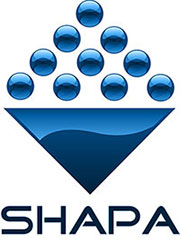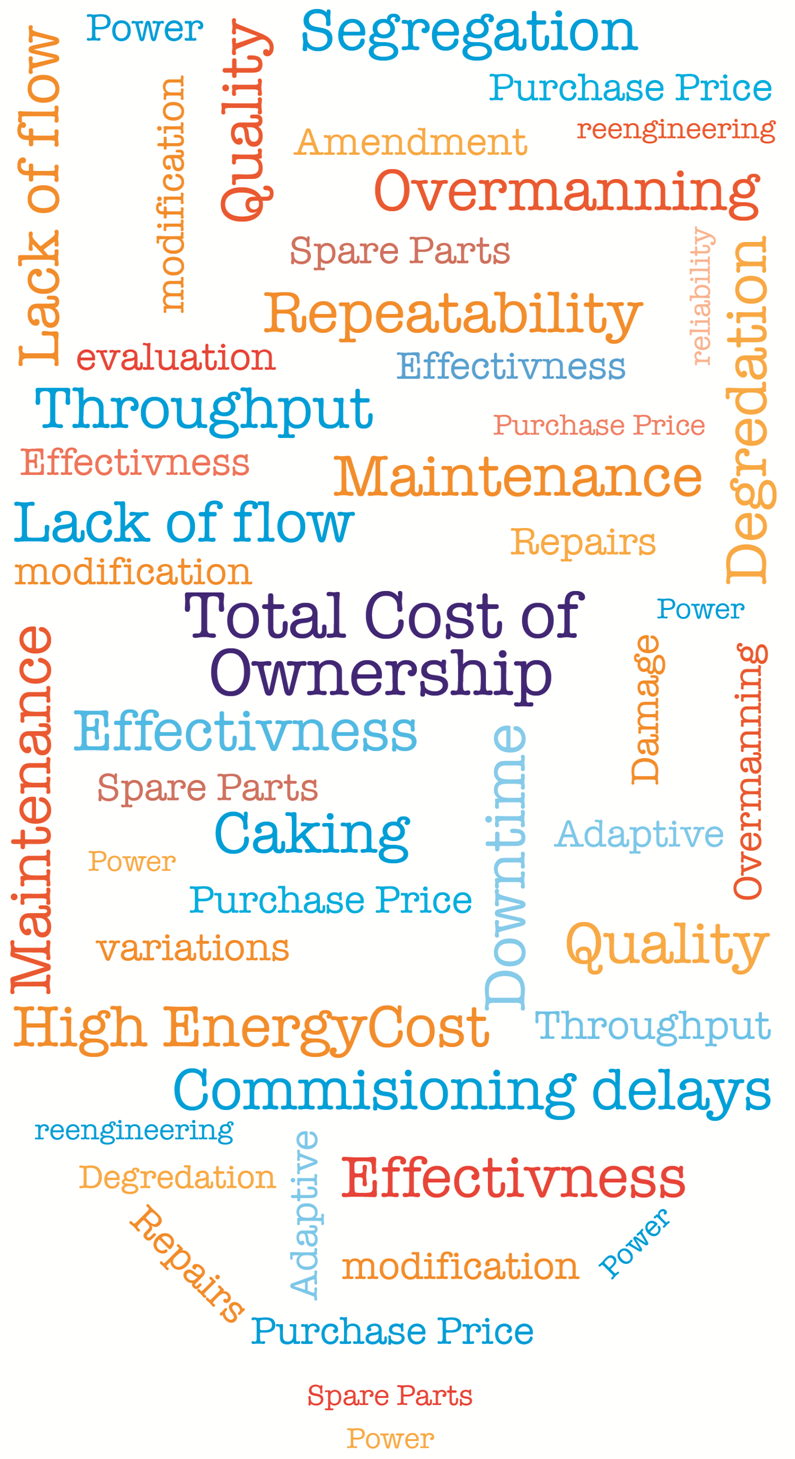Introduction and objectives
Of the bulk material handling companies in the UK those who are members of SHAPA tend to be in the upper quartile in terms of the design and quality of their equipment. One outcome of this is that our members need to compete on the basis of quality rather than cost. The aim of this document is to provide a framework to enable a salesperson to qualify the whole lifetime value of equipment so that this can be compared against other suppliers rather than just being compared on the basis of the initial capital cost. To own and operate an item of bulk material handling equipment comprises:
- Purchase cost (CAPEX)
- Running costs
- Maintenance costs
- Lost opportunity costs due to downtime or compromised customer product quality
The OPEX costs are often ignored but should not be as are normally much higher than the initial purchase price over the lifetime of the equipment. For example:
Assume a customer operates a process where the plant needs to run at full capacity to meet the demand of their customers. Assume that their process operates at a rate of 20 tonnes / day and a gross margin of £200 / tonne. Assume a new piece of process equipment is added at a capital cost of £50k, how would it’s reliability impact the total cost of ownership over just one year?
- Firstly let’s assume a reliable system with a 99.5 % uptime. The 0.5 % loss of production equates to 100 kg of lost opportunity per day on average, or £20 gross margin loss per day. Assuming a 5 day / week operation this lost opportunity cost would be £5.2k per year
- Now let’s assume that a cheaper substitute is chosen that costs only £40k but instead operates with an uptime of 97%. The lost opportunity cost in this case would be £31.2k per year.
- The better equipment would cost more to purchase but the additional cost would be recovered in less than 4 months of operation.
Agenda
The following agenda should allow you to guide your discussion to demonstrate the added value of your offer to the customer:
1. Is the proposed technology the best option for the duty
As a supplier can you demonstrate your objectivity by explaining all the options that you offer within your product range and why the proposed technology is the best solution? Can you demonstrate that solution in a ‘test centre’ or offer references to them to give them a higher level of assurance?
2. Loss of quality
As a user of this proposed equipment what measures of Quality or Process is important to you
- Reduce product damage during handling
- Minimises cross contamination
- Is quick and easy to clean between batches / campaigns.
- Enables better process monitoring
3. Does the design ‘match’ the material
As a supplier can you offer in-house material characterisation or work with a partner to characterize difficult materials to ensure that surface finishes, hopper / chute design and other equipment design options are designed to work well with the customer’s specific material?
4. Equipment reliability
What are your expectations to equipment reliability?
5. Spares & Service availability
What is the Companies Strategy for Disaster Recovery?
6. Running costs
As a user of the proposed equipment how does your company monitor your lifetime costs for both capital and revenue items
- The mechanical movement of materials (liquids or solids) uses only about 20% of the energy of pneumatic driven systems.
- The quality of electrical motor can significantly influence running costs. For example an IE3 11 kw motor running for 22 hours / day will cost £4.6k less a year to run than a standard efficiency IE1 motor.
- A correctly specified extraction or process fan can cost significantly less to operate for the same air movement performance.






















